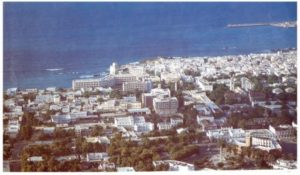By Dr. Nuur Hassan
This piece attempts to contribute to the current debate concerning the future status of Mogadishu in-unashamedly along clan-line federated Somalia. In doing so, the author will first, revisit the internalised historical, social, political and economic meanings attached to the city. Second, examine the Mogadishu’s debate in the context and the backdrop of the current federal model, as opposed to the old centralised republic. To help the reader understand what is at stake in the debate, the author utilises theory of Clan-Nation Disjoint, which calls for critical rethink about how clan identity is treated in Somali-led public discourses. Finally, the author puts forward a suggestion to the current impasse on the question of the future status of Mogadishu- while arguing for an equitable and win-win settlement that takes into account the current federal set-up and its dispensation.

History of Mogadishu- revisiting the Economic, Political and Social Imperatives
Since its early settlers in the 10th Century-Mogadishu, despite changing hands of ownership between dozens of dynasties, remained the centre to all that interfaced with ethnic Somalis wherever they are found. Fast forward to the latter part of the 20th century after a tumultuous period of colonial powers travestying the African continent, Mogadishu becomes the capital of Italian Somaliland during the Italian trusteeship period. After the independent and the birth of unified Somalia, there were no other choices, but to make Mogadishu the capital of independent Somalia in 1960 (cf. Encyclopaedia Britannica, 2018).
Economic, Political and Social Imperatives-the Internalisation
Pre-Somali civil strife-in the dying decade of the 20th century, Mogadishu boasted the most developed seaport, well-functioning international airport and the largest and most educated population in Somalia. Of course, these features would all disappear owing to the collapse of the centralised republic followed by the civil war. The genesis of the economic and social rises of Mogadishu is subject to contestation between two historical accounts. The first account attributes to an event that took place in 1948- after the UN agreed to place southern Somalia under Italian trusteeship (Amministrazione Fiduciaria Italiana Della Somalia–AFIS) so that it can be prepared for independent over ten years. However, the relationship between the newly-UN mandated AFIS and the SYL, who was by far the most organised political entity in Somalia at the time, started to deteriorate, which led to all out violent riots. Due to the discontent and protests by SYL led Mogadishu residences-the account asserts, AFIS had no other options, but to embark on massive economic and social development, planned and executed over a period of 7 years, where schools, higher learning institutions, and road infrastructure projects were initiated (Helen Chapin, 1992).
The second historical account points out to the medieval period of the city, its pre 16th century period, where trade, as well as people to people relationships with Persia, Arabs and Portugal started to take shape. In this period, the name Banadir- which is a Persian, meaning ‘Port’ was coined after the city owing to its booming commerce and trade (Elfasi & Hrbek, 215).
On the top of these two historical claims about the origins of the rises of economic and social development of Mogadishu, the author of this article argues for a third historical account- the period between 1969 and 1976. This period saw the implementation of mega developmental projects carried out by Siad Barre’s revolutionary government.
It is critical to note that all these developmental projects were either fully located in Mogadishu or partially located in its vicinity. The centralisation of everything in Mogadishu, made it the mother of all that is modern in Somalia- hence the internalisation, of which Mogadishu is indelibly attached to the emotions of every Somali citizen. During this period Mogadishu became where every aspiring student goes for his/her university education, where the middle class and the rich from all over the country compete for property ownership. Finally, the accumulation of the above over time, made Mogadishu the only city up and down the country that is at the centre of collective ownership claim by every Somali citizen.
Theoretical framework
This piece draws on the theory of Clan-Nation Disjoint to help the reader understand the debate and the factors that shape and as well as drive it. The theory is based on three problematized premises-
- There is an internalised perception (by the clans) of persistence divergence between clan and national interests.
- Clans developed and internalised (over the years) their own interest based on two pillars; Resource acquisition and availability of Security for their members.
- There is widespread disapproval (among Somali elites) of clan identity promotion (publicly) though they privately approve it-to serve specific interests of the clan either in power or one closer to power.
The theory argues that in order to understand the seemingly perennial disconnect between clan and nation in Somalia, there must be a complete and radical re-think of how clan identity is on one hand mistreated in public discourse and on other hand glorified in private spheres.
Banadir discontent-critical public discourse on Clan Identity is the only way outanadir discontent
Dr. Nuur Hassan
Email: [email protected]
We welcome the submission of all articles for possible publication on WardheerNews.com. WardheerNews will only consider articles sent exclusively. Please email your article today . Opinions expressed in this article are those of the author and do not necessarily reflect the views of WardheerNews.
WardheerNew’s tolerance platform is engaging with diversity of opinion, political ideology and self-expression. Tolerance is a necessary ingredient for creativity and civility.Tolerance fuels tenacity and audacity.
WardheerNews waxay tixgelin gaara siinaysaa maqaaladaha sida gaarka ah loogu soo diro ee aan lagu daabicin goobo kale. Maqaalkani wuxuu ka turjumayaa aragtida Qoraaga loomana fasiran karo tan WardheerNews.
Copyright © 2024 WardheerNews, All rights reserved


